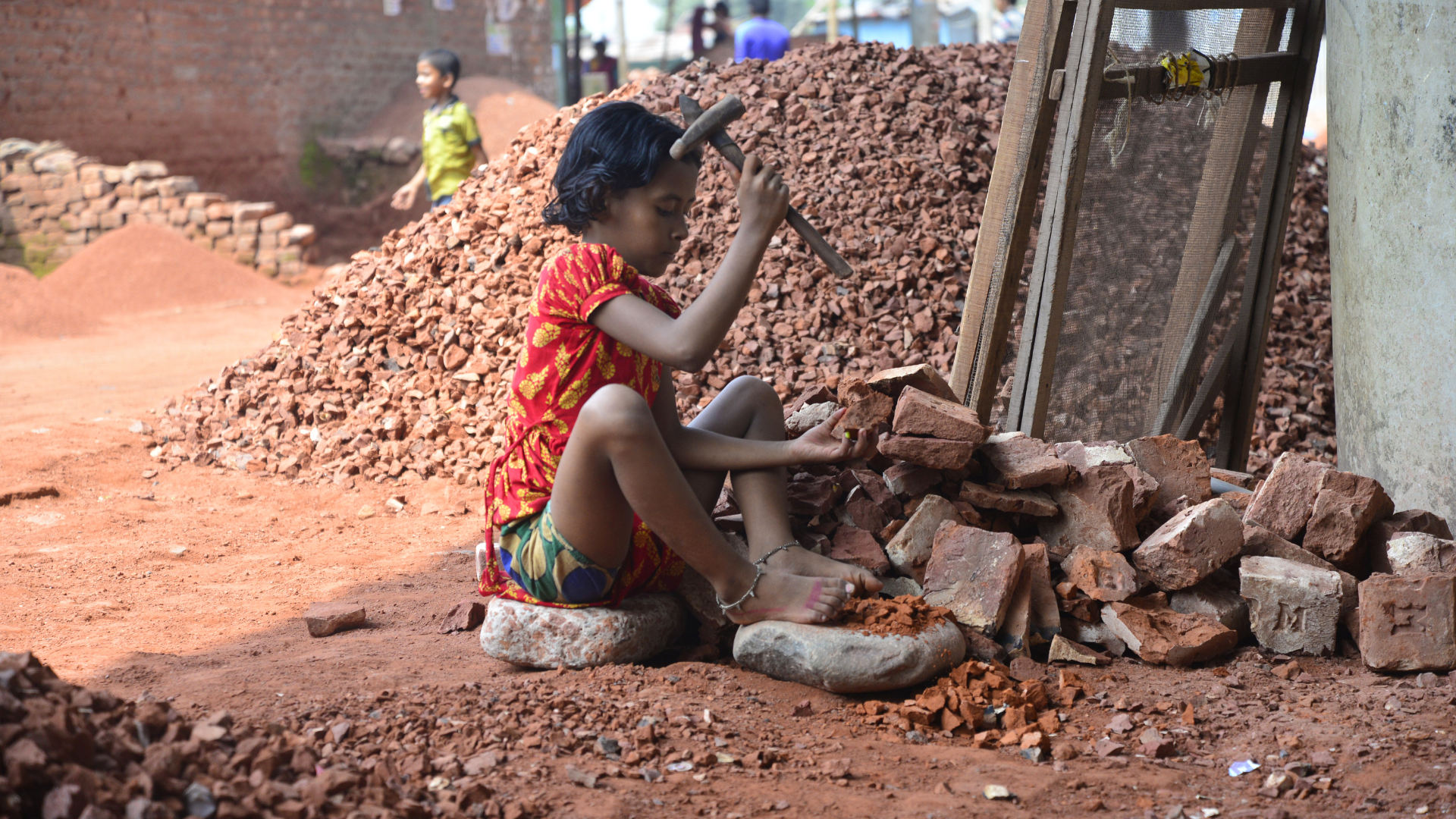CHILD labour takes place all around us. Children are commonly employed in restaurants, tea stalls, construction sites, factories and mills. Minors are also used in begging, agricultural labour and as domestic help. These children work in dangerous conditions, handle hazardous equipment and are often treated badly by employers and customers. Without a guardian or parent around, they are vulnerable to abuse and are often unwilling victims of crime, such as drug peddling. But the exploitation doesn’t stop there. Girls are especially vulnerable to sexual exploitation, including forced prostitution.
Our Every Girl in School mission aims to place 15,000 girls in school and empower them with an education that will protect them from the dangers of child labour.
Children are meant to spend their childhoods in a safe environment with access to education, healthcare and emotional support. This is vital for their growth and development into productive adults who can function in and contribute to society. But with 10.1 million children in India between the ages of 5 and 14 engaged in work, according to the 2011 Census, a significant portion of children in this age group are not just prevented but are pushed down into miserable conditions from which they cannot escape or recover.
World Day Against Child Labour is observed annually on June 12th to learn more about what causes child labour and implement processes to end the illegal practice that continues to employ 160 million children worldwide.
What is the root of the problem?
When a child is born into poverty, has little to no access to education and lives in an environment that considers working children as an acceptable practice, it makes it difficult to tackle the problem of child labour. These circumstances are widespread in India since 21.9% of the population live below the poverty line and more than 6 million children are out of school. Poverty and the need to work and supplement household income were cited as the main reasons that children did not remain in school, as per an independent survey conducted by the Ministry of Human Resource Development in 2014.
What do child labourers face?
Children’s “working conditions” are often not regulated since employing children is illegal to begin with. Children are therefore forced to work over 12 hours each day, are underpaid and work in unsanitary conditions. These minors are commonly abused in various ways including being shouted at, slapped and deprived of food. Children are also subject to the bonded labour system that enslaves at least 300,000 people. Bonded labourers are modern-day slaves who have been stripped of their legal rights and are unable to leave their place of work, often chained to prevent them from attempting escape. In addition to their forced labour, they are also trafficked for child prostitution and organ harvesting. In stone quarries and matchbox/fireworks factories, children suffer from asthma, tuberculosis, burns, mutilation and even death.
What do child labour laws in India say?
There are 259.6 million children in India’s 5 to 14 age group, and a 2016 amendment to the Child Labour (Prohibition & Regulation) Act prohibits their employment. But this has not stopped adults from breaking the law and employing over ten million children from this age group. Furthermore, the same law also prohibits children aged 15 to 18 from being employed in “hazardous occupations and processes”. But 25% of children in this age group are engaged in work and there are documented cases of children working in hazardous conditions, such as fireworks factories and brick kilns.
What happens to girls engaged in child labour?
Of the 10.1 million “working children’ across India, 4.5 million are girls who are under the age of 14. These young girls should be in classrooms but are instead ripped away from their families and made to work in inhumane conditions where they are subjected to abuse by their employers, including sexual abuse. Some of these girls are trafficked to other states or across the border where they are forced into red light districts and “broken” to the point of compliance as child prostitutes.
How education ends child labour
Losing access to education is where it all begins. Without educational opportunities, the chances of girls being forced into work are significantly higher. But when girls are allowed to remain in school, a multitude of opportunities are opened up that include better health, greater social participation, avoiding child marriage and being safe from child labour. Our Every Girl in School mission aims to place girls back in school – where they belong. It covers the cost of books, uniforms, tuition fees and other school-related expenses so that girls that are forced to drop out of school due to financial reasons have a way back to their classrooms.
This World Day Against Child Labour, donate to the Every Girl in School fundraiser to give girls the chance to create promising futures with an education:
Support Mission: Every Girl in School
–
Give’s mission is to “make giving bigger and better.” Give is the most trusted donation platform in India for fundraisers and crowdfunding campaigns. Through our technology solutions, we enable individuals and organisations to fundraise and donate to a cause, charity or NGO with trust and convenience. Give’s community of 2.7M+ individual donors and 300+ organisations supports 3,000+ verified nonprofits with 80G deduction and serves 15M+ people across India. Find a fundraiser today!

Shirley has been in the development sector for over 10 years and is passionate about making a change in the world around her, including adopting dogs and writing to make a difference.
Discover more from
Subscribe to get the latest posts sent to your email.

